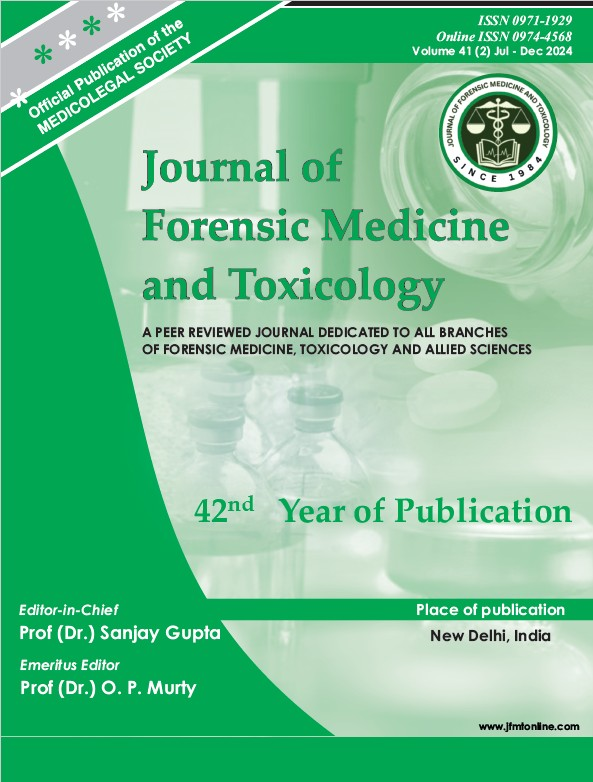ADMISSIBILITY OF NARCO-ANALYSIS FOR FORENSIC INVESTIGATION IN THE COURT OF LAW: CRIMINOLOGICAL PERSPECTIVE IN INDIAN SCENARIO
Keywords:
Narco-Analysis, Psychology, SodiumAbstract
In the present changing ethos around the world, the individual started to glance through their place in the space of simplicity, and for this, it needs a strong economy, regulative issues, and a lifestyle. This drives immense competition among everyone, and people started using Narco Analysis Test or Narco Test is been in the consideration of the practice with managing barbiturates, mostly Sodium Pentothal for lowering a subject’s inhibitions within the hope that the subject feels more engaged to share information and feelings without his/her reflexes1. The term Narco Analysis came by Horseley and was first utilized in 1922 when Robert House used the drug scopolamine on two prisoners to depict the truth. Since then narco-testing is essentially practicing in several democratic states, including U.S. and Britain. Narco analysis has serious legal and ethical issues. A person is ready to lie by using his or her imagination. During this test, the desired dosages for the subject are minimized by combining them with their systema nervosum. It becomes complex (although not impossible) for them to divert facts into consequences. In drowsy conditions, it is tried to clarify facts by relating them to the crime scene. Experts with the help of the medical officers, subject matter with drugs such as Sodium Pentothal or instead Sodium-Amytal, under proper guidance provided by the Anaesthesiologist2. The dosage depends upon the subject’s sex, chronological age, physical health, and fitness. The subject, who is undergoing the sedative condition, is in a state for talking well but, believes that could revert with answers facts yet questions as simple as a past life or educational levels3.
Downloads
References
B.R. Sharma, Narcoanalysis, Forensic Science in criminal investigation and trials, 6th edition, 1999. 2. Drugs, Brains, and Behaviour: The Addition of Science, National Instituteon DrugAbuse (NIDA) source from: drugabuse.gov
Ms. Snehal S. Shinde, Narco - Analysis - A Tool of Investigation.
Gowsia Farooq Khan, Narco analysis test: A blessing to the criminal justice system, its reliability, and admissibility in light of various Judgements. 5. Constitution of India, 1950.
Citizens guide to criminal law, By Monica Sakhrani, 2009.
Suzanne Bell, Forensic Science: An introduction to scientific investigations and techniques, fifth edition, 2019.
1977 Senate Hearing on MKULTRA:”Truth” Drugs in Interrogation (The CIA’S Program of Research in Behavioral Modification).
P.R.Walpe, K.R Foster, et.al, “Emerging neuro technologies for lie-detection: Promise and peril39- 49.s” bioethics, (2005).
A.K.Kala, of ethically comprising position and blatant lies about ‘truth serum’, 49 Indian J. psychiatry 6- 9(2007).
Rajesh Punia “Narco-Analysis-Investigating Tool or A Torture?”115Cri.L.J.22 (2009).




